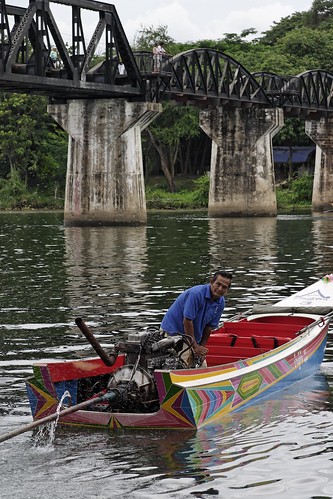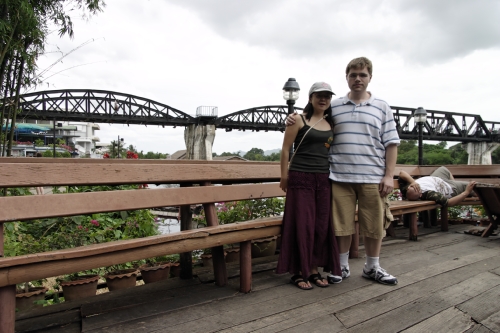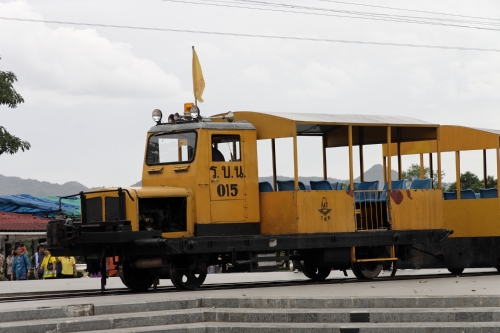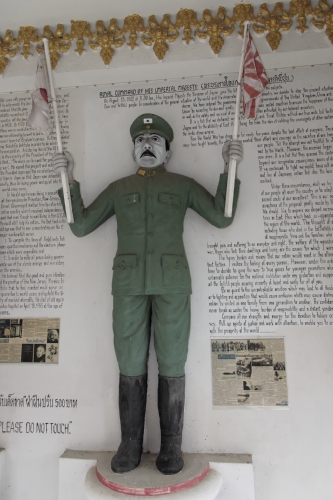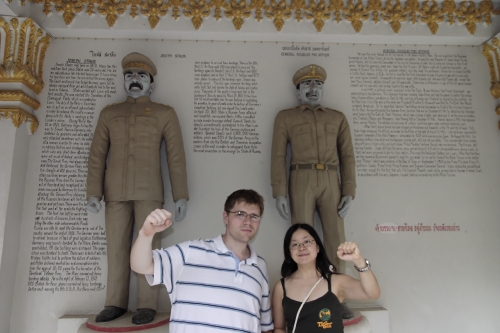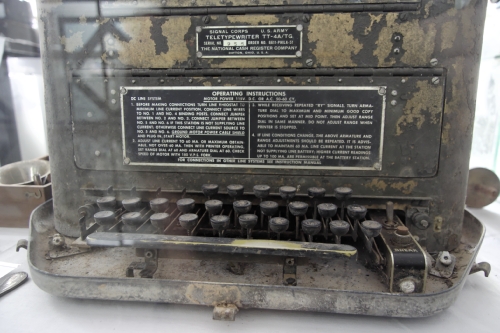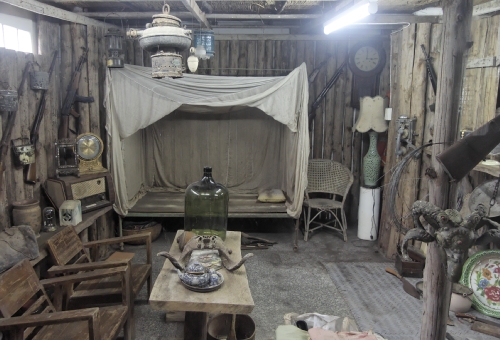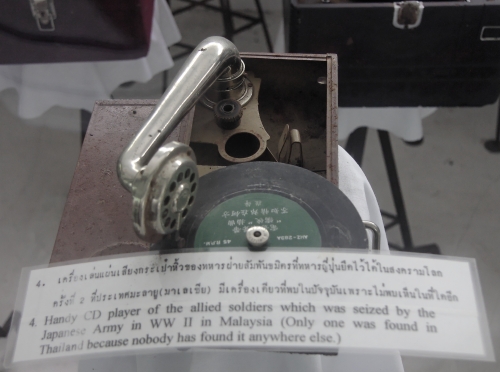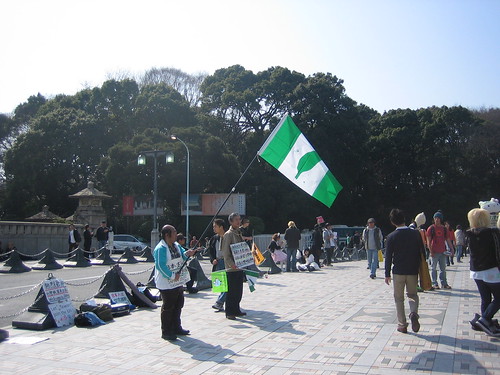Thomas Jefferson famously said, “The man who reads nothing at all is better educated than the man who reads nothing but newspapers.” As cliche as it’s become, the quote still rings very true to me as an avid newspaper and online news consumer.
Even today, it is very easy for those following the news to get caught up in the story of the day and completely miss the big picture. Part of the reason for this is that a news story is quite often the end result of months and months of researching, campaigning, planning, cost-benefit analyzing, focus grouping, intra-group wrangling, or any combination of the above. Therefore, when the average reader sees an announcement, whether it’s for a new hamburger at Wendy’s or the Barack Obama Speech About Race, we are forced to accept the basic premise and set of facts presented, and prevented by our own ignorance as outsiders, and the immediacy of reading information on the Internet, from seeing different parts of the story. The only possible response from the consumer is a sort of tit-for-tat reaction to the new information.
With that in mind, I want to talk about “Metabolic syndrome,” a set of symptoms, including overweight and high blood pressure, that puts one at risk of “lifestyle diseases” such as diabetes. In many cases it is indistinguishable from obesity (and in modern Japanese the terms are used somewhat interchangeably), but it is apparently useful as a medical definition.
The term became especially popular in Japan in 2007, as popular TV shows, infomercials, newspapers, and even the government played up the disease as a growing danger for Japanese people as they live increasingly sedentary lifestyles and consume ever-greater quantities of greasy Western snacks.
The English-language news media has noticed this phenomenon. The Japan Times, a local Japanese English-language newspaper aimed at the expat population, notes:
These days, not a single day goes by, it seems, without there being a fitness-club flier, a beverage ad or a new recipe that contains some mention of metabo, short for “metabolic syndrome.”
In contrast to the massive hype over the increasing problem of metabolic syndrome, the introduction of “specified medical examinations” at the beginning of this month has received much less fanfare. Under this system, all insured persons aged 40-74 will be required to undergo a yearly health check up, followed up by mandatory “guidance” if they are diagnosed with certain conditions. Metabolic syndrome is perhaps the most controversial, as people diagnosed with the condition may have to go through “active guidance” if they are particularly fat.
Coinciding with the introduction of this program is a series of article in the Nikkei Shimbun by a major corporate research group (I think Nomura) titled “the Emerging Metabolic Syndrome Market.” The series is ongoing, but some of its main points can be summed up as follows:
1) The specified examination system will result in thousands, if not millions, of people being officially diagnosed with “metabolic” syndrome.
2) The current medical establishment does not have the capacity to handle all these new “patients” so the mandatory follow-up care will be left in the hands of outsourcers.
3) The program, part of a Koizumi-era medical reform plan (also featuring increased premiums and patient contributions), is intended to make people healthier, which will reduce Japan’s total medical bill. However, actual cost savings will probably take at least 25 years to emerge, and in the short term the government will be dishing out massive largess to whoever can fill this current legally-mandated demand.
The Japan Development Bank has estimated that this metabolic syndrome market will grow to 280 billion yen, a “chance for medical institutions facing harsh business conditions [due to a drop in government payments in the national insurance scheme] to improve their revenue.” 45% of the 9.45 million targets of the system are expected to be judged as metabolic cases or in danger of becoming so, resulting in extra medical expenditures of 73-141 billion yen per year.
This specified exam system has been in the planning stages for years. In the meantime, the media has fanned popular worry over an obesity epidemic, couched in the convenient, one-word slogan “metabo.” And now doctors, or their counterparts in third-party examination centers, have the correct mindset and the legal authority to start diagnosing the problem and mandating treatment. The media, over the past two years or so, has featured the problem of metabolic syndrome in perhaps dozens of creative segments, ranging from features on anti-metabolic syndrome products, to informative explanations of the waist size/internal organ fat conditions for the diagnosis, to wackier efforts by Health Ministry officials to document their efforts to lose weight.
While the term metabolic syndrome is not new and is not a Japanese invention, the intense media campaign has injected the word “metabo” as synonymous with obesity in the Japanese language, with the added twist of hipness (new, trendy words are always a topic of small talk in Japan) and the specificity that comes with “metabolic syndrome” being the name of an actual disease rather than a mere physical attribute.
Without this propaganda campaign and the re-definition of the word obesity, it is unlikely that a vibrant market for anti-metabolic syndrome products would develop as effectively. But taken together, public awareness of the issue is so high that a diagnosis of metabolic syndrome will make much more sense to people and may make them more receptive to attempts to influence their behavior in a healthier direction.
I see two ways to view this major awareness campaign to alert everyday Japanese to the dangers of obesity – either Japan’s medical establishment has come up with an ingenious method for preventive care that will ensure that the life expectancy for Japanese people extends well into the 90s, or government, industry, and the media are conspiring once again to manufacture demand to solve a non-existent problem.
True, it seems like there is a real obesity problem here and a comprehensive plan focused on preventive care (i.e., fighting unhealthy habits will help prevent more serious ailments such as diabetes and heart disease) is a great idea. On the other hand, a massive, mandatory treatment program might be overdoing it, especially if it is taxpayer funded. The system does sound like it might be effective in addressing a real problem, to the extent that it encourages healthy behavior, and could lead to better quality of life for a lot of people. And as with the intention of many Koizumi-era reforms, the creation of new markets through smart regulation may be just what Japan needs to enliven its economy and, through the health benefits, help keep its working population on the job for the extra years that will be required in an aging society.
But my more cynical side tells me that the medical industry may not have Japan’s best interests at heart. If in fact, the expenses are not justified (and hundreds of millions of dollars in extra health burden with no promised overall benefits for a generation seems a little fishy to me) then the government could merely be entrapping its people into a handout scheme for the medical and health product industries.
Only 3% of Japan’s population is considered obese by body mass index standards, compared to ten times that ratio in the US. The figure has risen significantly for Japan over the past few decades, no doubt a result of the often mentioned higher living standards and Westernized diets. But as any prolonged contact with Japanese people will tell you, the demand for health supplements, beauty products, spa treatments, exercise machines, and all manner of health-related products is enormous. I wouldn’t be surprised if the market scale rivaled the US.
However, metabolic syndrome is a substantial redefinition of obesity (not that that is necessarily a bad thing — it seems to correspond much more closely to health problems than BMI, at least from a comparison of Wikipedia articles). Even if people are not fat in the traditional sense, they are much more likely to have the required body measurements for metabolic syndrome. And sure enough, media fanfare over this syndrome dovetails nicely with the ever-growing numbers of products offered to help fight it. And as any quick look at the Japanese mass media will tell you, there is no shortage of such products (today on NHK I saw a full-on infomercial for boxer briefs that force men to take larger strides when they walk, which will help them burn more calories during the day).
From my own observation of the Japanese user-generated media (which consists of a few favored blogs, a 2ch news aggregator, and the diary posting of my mixi friends), the reaction to the metabolic syndrome hype has been quite shallow, with perhaps zero discussion of this upcoming mandatory treatment system (until now, since it came into effect). Indeed, according to a survey translated at What Japan Thinks, almost two thirds of people are unaware that the specified examination system even exists. That, I think, is understandable since the coverage of this issue has tended to be in the form of corporate press releases quoted verbatim, statistics from medical establishment publications on the growing problem.
Honestly, I am no medical expert, and I do not intend to attempt a comprehensive assessment of the relative benefits of mandatory health exams for the middle aged, or of the real dangers of metabolic syndrome. But personally, I have been disappointed in myself for not giving this issue much thought until I ran across that series of articles in the Nikkei. Like many people, probably 75% of the reading I do in a given day consists of news articles, the paper newspaper, and blog posts. They are all quite entertaining to read and keep me informed of what’s going on in the world on a day to day basis, but the net effect of reading superficial day to day coverage is that I end up being completely in the dark about what sort of plans are being hatched behind the scenes.
The Japanese press has asked some of the right questions, and for someone more engaged the information is out there. A Yomiuri Shimbun report from last year cites experts who wonder why the waist size requirements are slimmer than those of other countries (a detail that can have massive implications on how many are singled out for mandatory “guidance” and whether that will affect people who are actually healthy), but in the end the hype has drowned out skepticism and a “metabolic syndrome market” is already fast being built without the knowledge of the vast majority of people. Residents of Japan may be getting fleeced in the deal in terms of increased insurance costs and dubious products intended to solve a problem that for many won’t really exist.

